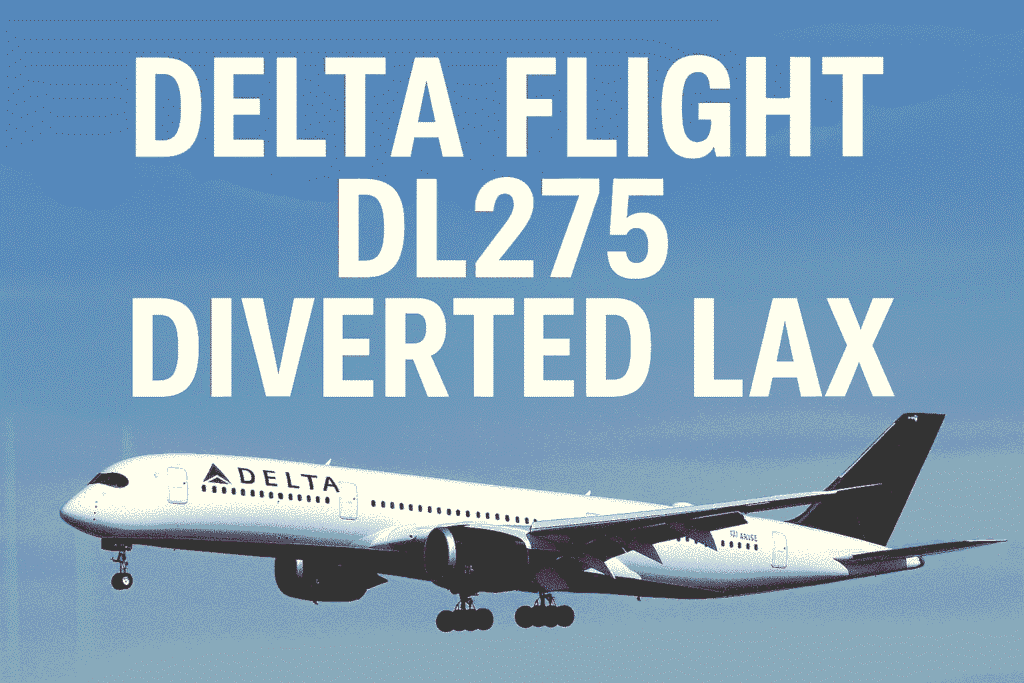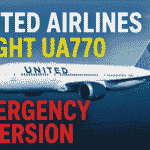A normal day suddenly changes
The flight started like any other: passengers boarded, bags were stowed, seats reclined, and everyone settled in for a long haul. But on that day, things didn’t go exactly as planned. The moment came when Delta Flight DL275 diverted LAX.
What was the original plan
Delta Flight DL275 was scheduled to fly from Detroit to Tokyo (Haneda). It was going to cover a long international route. Reports say the aircraft was an Airbus A350-900. All was well at first.
When things changed
While cruising at high altitude — around 38,000 feet — somewhere over the North Pacific, the crew detected a technical problem. Specifically, a malfunction in the engine’s anti-ice system was flagged. That system helps prevent ice from forming in very cold, high-altitude conditions. Because of that malfunction the decision was made: Delta Flight DL275 diverted LAX.
Why choose LAX
Lots of airports could handle a diversion, but in this case the aircraft was routed to Los Angeles International Airport (LAX). Why? Because:
- LAX is a major hub for the airline Delta Air Lines, with strong maintenance support.
- The crew judged that continuing to Tokyo would be unsafe given the technical issue. A safe landing sooner was better than risking more trouble.
- LAX has big runways and infrastructure to handle large aircraft and diversions. That made it a logical choice.
Onboard the flight
When the announcement came that Delta Flight DL275 diverted LAX, passengers understandably felt surprise and some anxiety. Many describe how the cabin crew responded calmly, the pilot explained the situation, and everyone began to prepare for the change. Although unexpected, the situation was handled professionally.
The landing and immediate aftermath
The aircraft touched down safely at LAX. After that, passengers had to deal with the disruption: re-routing, delays, missed connections. The airline had to organise accommodations, maintenance, and logistics.
Cost and implications
A diversion like this is more than a small change. It carries financial and operational cost. In the case of Delta Flight DL275 diverted LAX, analysts estimate the cost to the airline was around $2.3 million when you include fuel, delay, aircraft inspection and schedule disturbance.
What it teaches us
- Safety always comes first: Even if everything seems fine, airlines will choose to divert if a key system shows signs of trouble. The fact that Delta Flight DL275 diverted LAX shows protocols worked.
- Passengers may face inconvenience, but the goal is protection and preventing a more serious incident.
- Maintenance, monitoring and decision-making matter a lot in long-haul flights.
- If you’re flying long distances, keep in mind that diversions can happen — not from passenger error, often from physics, weather, equipment.
Final thoughts
In the end, the story of Delta Flight DL275 diverted LAX isn’t about panic or disaster. It’s about caution, preparedness and safe outcomes. The flight didn’t reach its original destination as planned, but everyone got down safely, and a potentially worse scenario was avoided.
So next time you fly and hear about a diversion, remember: it might feel unsettling, but often it means the crew and airline are doing exactly what they should to keep you safe.

